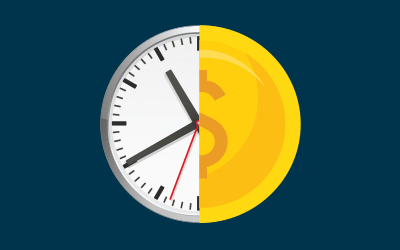
User Experience (UX) became an official term, coined by cognitive psychologist Don Norman, in 1995 when Apple employed him as the very first User Experience Architect. User experience is defined simply as a person's feelings towards a product and how that user interacts with, and experiences, said product.
However, even though its officially been around since the 1990's, and realistically before that, it was not until the mid to late 2000's that user experience began to be heavily invested in. Today, only 55% of businesses reported that they invest in UX, despite the fact that its an effective way to save money and grow your business.
As a UX Designer, I am constantly advocating for the importance of user experience research and design in the workplace. It's often hard for others with big, bold ideas to understand why we need to slow down and think through every angle of an idea, feature or design choice rather than just run to market. This new idea may seem like the latest and greatest problem solver, however here are a few reasons your business NEEDS (not should consider, NEEDS) to invest in user experience research and design:
A big bold idea without testing the market is simply that, an idea. How do you know this is what your customers or users need? How do you know it will solve their problems? How do you know they'll use it? Until you invest either time or money into user research to test your target market, you have no actual facts or statistics to help guide your product development which can lead to wasted development time and money, and sometimes, complete product failure.
The best products solve a problem. One of the biggest failures in product development is not gaining insight into your user base, what their current problems are and what challenges you can help them solve. You may think that your priorities lie in one area of development, but if you discuss with your user base what would help them do their job more efficiently, you may find that your users want something totally different. Gaining these insights into what your users want and need can help develop your product road map and prioritize features that will not only help you current user base, but grow that user base through customer success.
Really. It's that simple. A moderated or unmoderated usability study given to a group of 5 different people within your target market can help you discover up to 85% of usability issues. Given that percentage, that means the probability one person will encounter an interface problem is 31%. This, quite literally, translates to nearly 1/3 of your customer or user base encountering a problem while working with your product. These problems can range from bugs within functionality to users not understanding how to interact with the product, but it directly correlates to loss of revenue and customer satisfaction.
Every $1 invested in UX results in a return between $2 and $100. This is because development efforts takes significantly longer than design efforts. Its not a slight to designers, its a simple fact of 2D, flat functionality versus something that must be interactive and function for an end user. Steve Olenski of Forbes stated, "According to IBM, code defects are 30 times more expensive to correct than using the right information in the first place. It is extremely unlikely that these coding defects will occur if you choose the UX design." By creating designs and doing user research during the design phase, rather than the development phase, you're mitigating hundreds of hours of rework in functionality and, in turn, saving your company money.
In fact, Harvard Business Review reported that over 20% of happy customers told 10 or more people about their experience. Users become your product’s best advocates — free of charge — when you provide them with good experiences.